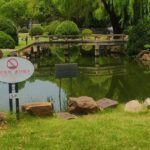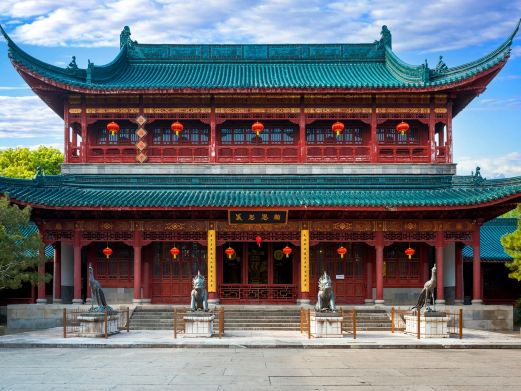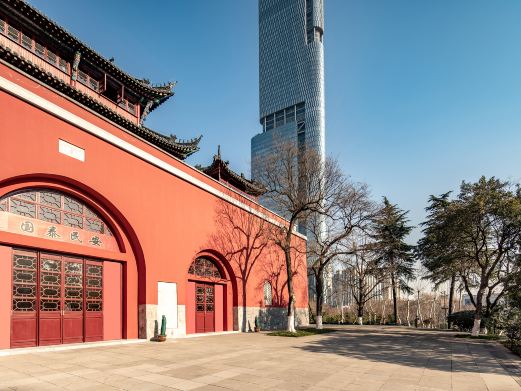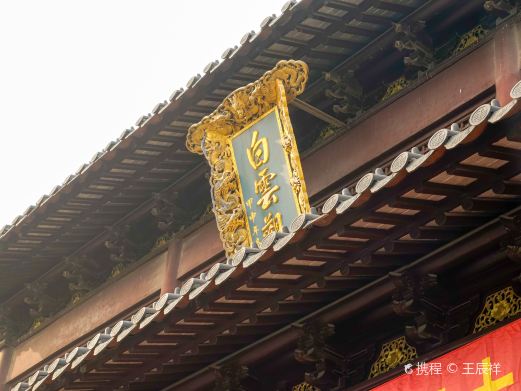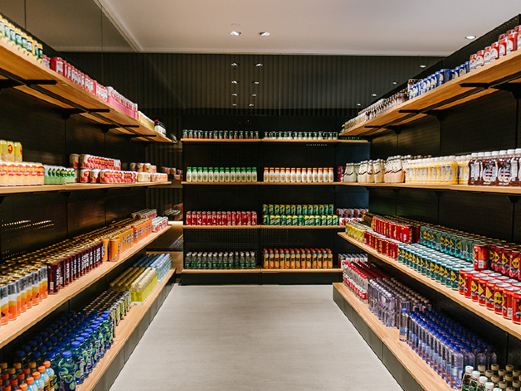Longgong ancient village preserves several ancient dwellings, three ancient ancestral halls with exquisite carvings, many ancient temples, several ancient paths, four ancient bridges, more than ten ancient trees and other historical sites. The ancient ancestral hall that can be seen as soon as one enters the village is different in architectural design from other ancestral halls in Ninghai. It has two patios, front and back. The stage and corridors of the ancestral hall are all exquisitely carved. There is still a large root dragon more than ten meters long hanging in the central hall of the ancestral hall. There is Yuying Academy in the village, which is one of the four ancient academies in northern Ninghai. Among the well-preserved ancient dwellings in the village, there are two courtyards, both of which are for ‘five generations living under the same roof’. 2 kilometers northwest of the village is Longgong Nunnery, also known as Jifu Courtyard, commonly known as Longgong Big Nunnery. It was built in the ninth year of Zhengtong in the Ming Dynasty and still exists. There is a Pterocarya stenoptera dragon tree with a diameter at breast height of 5.6 meters in the Qiaokeng where the stream flows through the village. Longgong Stream is a better natural landscape in the village. Longgong Village is located in a high mountain basin, surrounded by five high mountains. To the southeast is Waigangjian, to the south is Dahu Jian, to the southwest is Xiaohu Jian, to the northwest is Zhenting Mountain, and to the northeast is Sijian Ding. At the two water inlets in the south, there are lion head and white elephant head分居东西respectively. Among them, Zhenting Mountain was a famous mountain on a par with Gusu Mountain and Kuaiji Mountain in the Han Dynasty. It is the boundary mountain of Ningbo, Shaoxing and Taizhou. The large and long stream flowing down from Zhenting Mountain flows from the west of the village to the front of the village, and then passes through Xixi to the Daxi River at the south gate of Ninghai. There is a deep pool in the west of the village, called Shilongdou. According to the Gazetteer of Ninghai County in the Guangxu period, ‘Longgong Yudou is under the stone cliff. According to legend, dragons enter and exit here. There are traces where they turn and rub. Below is a large deep pool. No one knows where the pool comes from. The water in the pool pours down and sprays like a flying silk. There are three characters ‘Shilongdou’ on the cliff.’ The pool is called Longtan. Therefore, the stream where the pool is located is called Longxi, and the village is named after Longxi. Later, because the strange rocks beside Shilongdou are towering and in the shape of a palace, in the thirteenth year of Zhengtong in the Ming Dynasty (1448), Longxi was renamed Longgong Stream, and the village was also renamed Longgong, which remains so until now. On the south side of Daxi River, there is a tributary called Shankeng Stream. There are several Longtan and waterfalls such as Xiangyanxie, Xiaofangxie and Dafangxie in the stream. Open all year round and open all day. The specific business status is subject to the opening situation on the day.
Longgong Village
Longgong ancient village preserves several ancient dwellings, three ancient ancestral halls with exquisite carvings, many ancient temples, several ancient paths, […]




